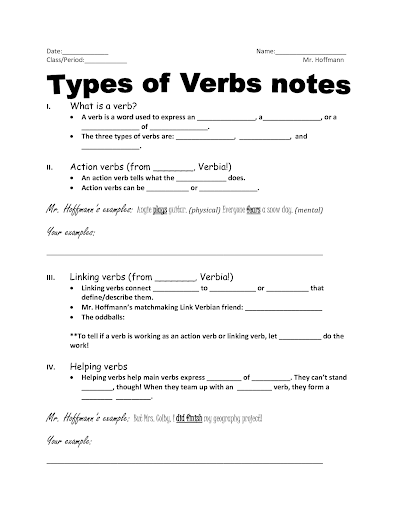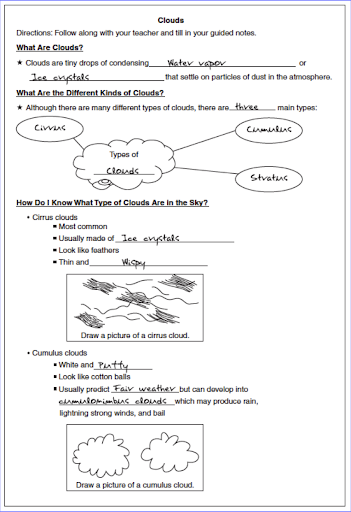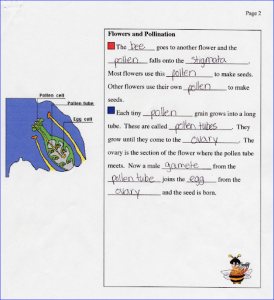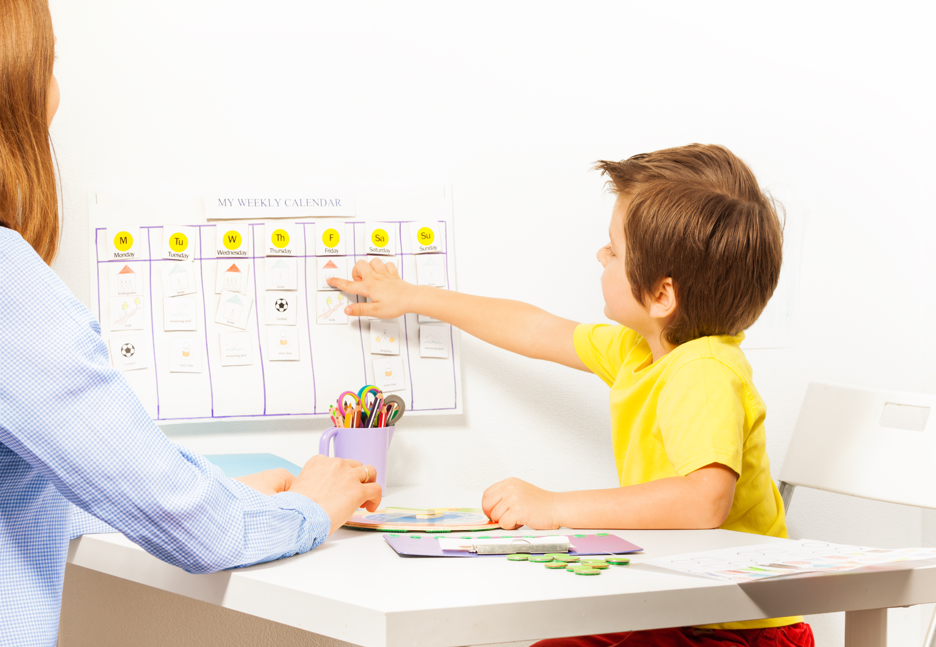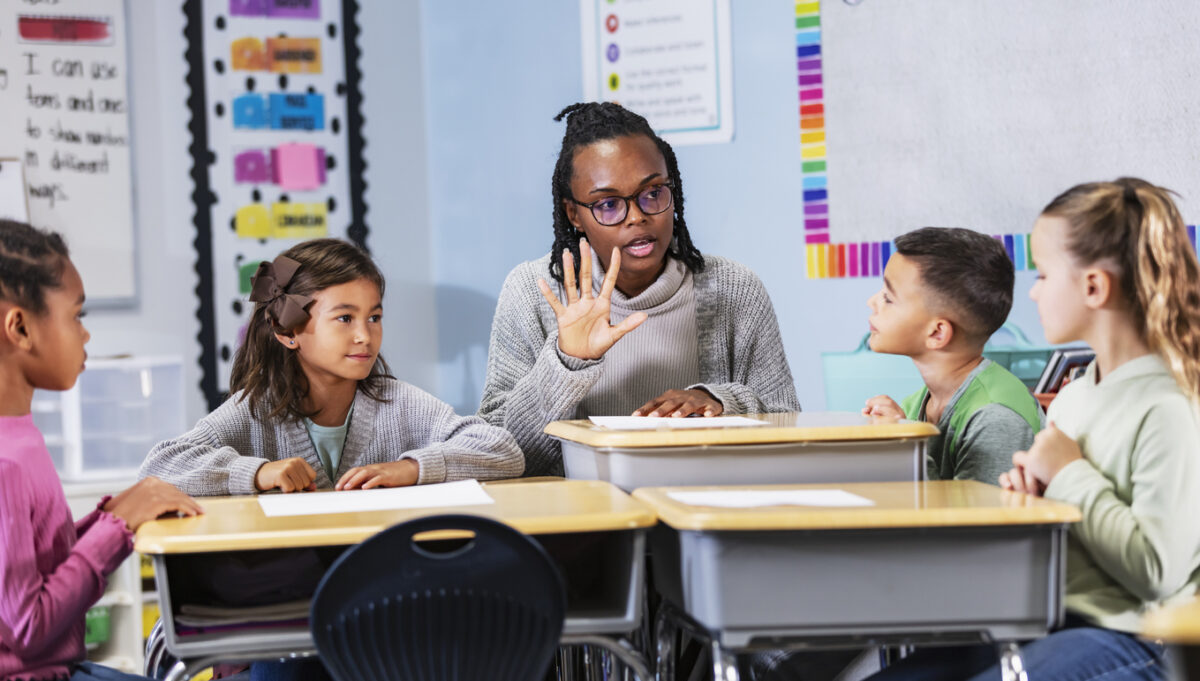Guided notes are handouts that guide students through a lesson, with background information and visual cues that indicate where they should write key facts, points, and relationships. Similar to choral responding and response cards, guided notes are an Applied Behavioral Analysis (ABA) technique that allows an entire class of students to respond to questions or prompts simultaneously.
How Guided Notes Work
When taking guided notes, students fill out thinking pages and study aids to support learning.
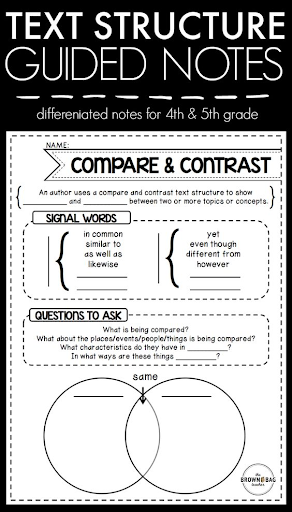
Guided notes provide students structure to help them listen, attend, and capture relevant information during a lecture or video. On the continuum of teacher effort and preparedness we’ve been referencing in our posts about ABA techniques in the classroom, this strategy probably requires the most effort on the part of both teacher and student, but the results justify the effort.
Guided notes provide structure, with critical information left out, to encourage students to listen, think, and follow along. Teachers can pause, prompt, and encourage students to fill out their notes as the lesson progresses.

Students can use guided notes to follow along with a lecture, video or lesson. They can be used for any curriculum area, subject, or grade level. They can be used to highlight and think critically about key concepts. They’re available for later study and review. They can be used to teach note-taking skills.
Guided notes can be simple, but they can also increase in complexity. They are most useful to students when the teacher has carefully prepared the lesson and the corresponding notes. They are most effective in classrooms in which the students are likely to stay on task with the lesson. And they’re worth the effort: Research shows that students at all achievement levels earn higher scores on quizzes and tests that cover curriculum content taught with guided notes, compared to the scores earned when students take their own notes (Konrad, Joseph, Eveleigh, 2009).
Tips for Using Guided Notes Effectively
There are several key aspects of guided notes that make them more impactful than students’ own notes. Teachers can incorporate these best practices into their lessons and the notes themselves, to help ensure optimal outcomes from the use of guided notes
- Provide background information, so students’ note-taking focuses on important facts, concepts, and relationships.
- Use consistent visual cues that show where, when, and how many concepts to record.
- Make sure the notes include all facts, concepts, and relationships that students are expected to learn.
- Don’t require students to write too much.
- Review notes for accuracy before students use them to study. The teacher can review each students’ notes, followed by a student self-check of the notes and a peer review.
- Build in follow-up activities and contingencies for students’ completion and study of the notes.
Benefits
Research shows that guided notes help a variety of learners. Not only can they result in improved quiz and test scores, compared to students’ own notes, they help all students understand exactly what they should be learning and whether or not they’ve got it. Students are better able to determine whether they’re understanding the curriculum, because key facts, concepts, and relationships are highlighted. And the fact that students produce a standard set of accurate notes for subsequent study that can be reviewed by the teachers, self-checked, and peer reviewed allows for review of the material that is focused on what’s most important.
Guided notes are just one more technique that encourages Active Student Responding. We know that more opportunities for students to respond during class result in more engaged learning. ASR techniques provide opportunities for fun, quick, informal formative assessments and observational and peer learning. Students enjoy them, and so do teachers.
If you’re interested in trying some of the other techniques covered in this blog post series, below are some links to digital tools you can use to try ABA techniques with your own students. For example, Formative is a live active digital tool that can tell you how your students are responding to your lesson in real time.
Additional Resources
- Guided Notes Maker
- Response cards – Quiz and Poll Creators Curated by Janet Twyman
- Enhancing Engagement – Article by Matt Tincani and Janet Twyman
- How to improve student learning in every classroom now – Article by Janet Twyman and William Heward.
- Digital behavior management tools:
We hope that you’ve enjoyed our series highlighting ABA tactics in classroom settings!
If you are looking for more quick tips on how to use ABA strategies at home visit our Youtube channel.
You can also find more articles on a variety of ABA strategies here.


